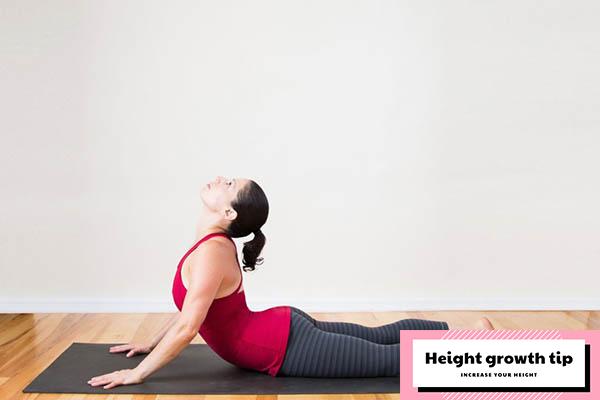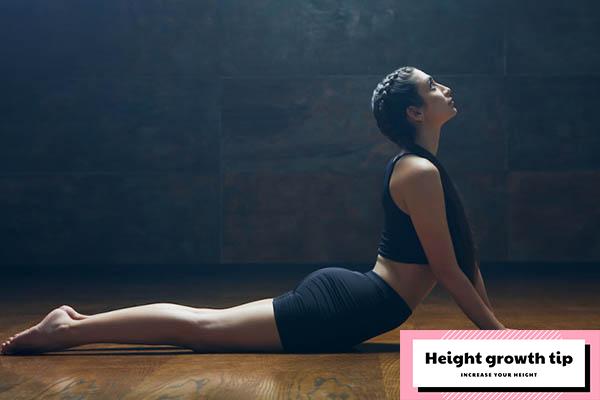Intriguing as it may sound, the concept of cobra stretching exercises as a means to enhance height begs for a discerning examination. Can a series of stretches, inspired by the graceful arch of a cobra, genuinely hold the key to unlocking latent height potential? To answer this pressing question, one must venture beyond the claims made by ardent proponents and delve into the realm of scientific principles governing human growth and skeletal structure. By doing so, we embark on a journey that will either confirm the efficacy of these exercises or cast doubt upon the elusive pursuit of heightened stature.
In the following exploration, we will dissect the intricate mechanisms behind the practice of cobra stretching exercises and scrutinize the scientific evidence supporting or debunking their purported benefits. With a critical eye and a commitment to separating truth from myth, we aim to provide clarity on whether the pursuit of increased height through cobra stretching exercises is grounded in reality or remains a captivating yet elusive dream.
Can Cobra Stretching Exercises Truly Lead to Height Growth?
The question of whether cobra stretching exercises can genuinely result in height increases has been a topic of interest and curiosity. It is widely acknowledged that yoga, as a holistic practice, can play a pivotal role in fostering height growth and overall physical development. One of the key yoga poses often associated with this endeavor is the cobra pose. This particular pose targets a wide range of muscles throughout the body, promoting not only flexibility but also strength.
The cobra stretch is a comprehensive exercise that targets various muscle groups, including:
- Triceps: The cobra stretch activates the triceps muscles located at the back of the upper arm.
- Hamstrings: By extending the legs and lifting the upper body, this stretch provides both stretching and strengthening benefits to the hamstrings at the back of the thigh.
- Spinal Extensors: The cobra stretch engages and strengthens the muscles that run along the length of the spine, such as the erector spinae, which contributes to improved spinal stability and strength.
- Gluteus Maximus: The largest muscle in the buttocks, the gluteus maximus, is involved in stabilizing and supporting the hips and pelvis during the stretching routine.
- Upper Back Muscles: Maintaining proper posture and alignment during the cobra stretch requires the participation of upper back muscles, including the rhomboids and trapezius.
By systematically strengthening these muscle groups, the cobra stretch aims to fortify the spine and back musculature, enhance the alignment of the shoulders, hips, and pelvis, and cultivate an increased level of overall body strength and flexibility. Additionally, this practice can significantly contribute to achieving an upright and dignified posture by facilitating the realignment and correction of the spinal column. As a result, individuals may not only experience physical benefits but also aesthetic ones, ultimately enjoying an improved sense of well-being and an enhanced physical appearance.

How to Properly Execute the Cobra Pose and Establish a Consistent Practice Routine
The cobra pose is a yoga posture that offers numerous benefits for your flexibility and strength. To ensure you perform this pose correctly and maximize its advantages, follow these comprehensive step-by-step instructions:
Step 1: Begin by lying flat on your stomach with your legs extended, and your toes resting on the floor. Place your palms firmly on the ground, positioning them near your shoulders, and keep your elbows close to your body.
Step 2: Engage the muscles in your legs, pressing the tops of your feet and thighs into the floor to create a stable foundation.
Step 3: Inhale deeply and initiate the pose by gradually pushing your hands into the floor. Straighten your arms while lifting your chest away from the floor. Maintain contact between your pelvis and the ground throughout this movement. Focus on lifting your upper body with particular attention to your navel area, and ensure that your buttocks remain relaxed to prevent straining your lower back.
Step 4: As your chest rises, gently squeeze your shoulder blades together to open your chest fully. Make certain that the bending of your spine is evenly distributed across your entire back, promoting a balanced stretch.
Step 5: Hold the cobra pose for approximately 10 to 15 seconds, or longer if it feels comfortable, while maintaining a steady and controlled breathing pattern. When you’re ready to release the pose, exhale slowly and lower your upper body back down to the floor.
Now, when it comes to establishing a consistent practice routine for the cobra pose to reap its benefits fully, consider the following recommended schedule:
- Monday: Incorporate this asana into your morning routine, performing it 10 to 15 times.
- Tuesday: Include this pose in your evening practice, again doing it 10 to 15 times.
- Wednesday: Start your day with 10 to 15 repetitions of the cobra pose.
- Thursday: In the evening, perform this asana 10 to 15 times.
- Friday: Begin your morning with 10 to 15 rounds of the cobra pose.
- Saturday: Include this pose in your evening practice, performing it 10 to 15 times.
- Sunday: Kickstart your day with 10 to 15 repetitions of the cobra pose.
By adhering to this practice routine, you can harness the full potential of the cobra pose and experience its benefits more effectively.
What should you keep in mind?
Consider the following important factors and precautions when engaging in the cobra stretch, a yoga pose renowned for its benefits:
- Mindful Neck Alignment: When executing the cobra stretch, prioritize a deliberate and gradual movement of your neck. It is essential to maintain proper breathing techniques, inhaling and exhaling through your nose rather than your mouth. Hastening this maneuver or executing it incorrectly may strain neck muscles, potentially leading to injury.
- Precise Hand Placement: Achieving correct form involves ensuring that your hands are appropriately positioned relative to your shoulders. Neglecting this alignment can adversely affect your shoulder positioning, leading to compromised posture and the possibility of bodily harm.
It is imperative to acknowledge that specific individuals should abstain from engaging in this stretching exercise due to their unique conditions or circumstances:
- Individuals suffering from severe neck ailments are advised to refrain from performing the cobra stretch.
- Pregnant women should abstain from assuming the cobra pose due to potential risks.
- Those who have undergone abdominal surgery are advised to steer clear of the cobra stretch.
- Individuals who have experienced recent surgical procedures or acute spinal cord injuries should avoid engaging in the cobra stretching exercise.
- If you have been diagnosed with carpal tunnel syndrome or are dealing with other wrist-related issues, it is inadvisable to incorporate the cobra stretch into your routine.
Incorporating these considerations and exercising caution based on individual circumstances will help ensure a safe and beneficial cobra stretching experience.

What are the other health benefits?
Apart from enhancing spinal strength and extension, engaging in cobra stretching exercises offers a multitude of additional health benefits. Here are some of the notable advantages:
- Reducing Excess Fat: Cobra pose specifically targets abdominal fat, facilitating calorie burning and augmenting muscle flexibility. This contributes to toning the buttocks and spinal muscles while accelerating metabolism, leading to increased calorie expenditure.
- Supporting Circulation: Cobra stretches play a pivotal role in promoting optimal blood circulation. This ensures that the body’s cells receive sufficient oxygen and essential nutrients, crucial for sustaining energy levels and overall bodily function.
- Improving Digestion: Regular practice of cobra stretching stimulates the digestive organs and encourages the secretion of digestive enzymes. This can facilitate improved food absorption and overall digestion.
- Enhancing the Reproductive System: Cobra stretching can invigorate the hormonal and reproductive systems by enhancing blood flow to the ovaries and uterus. Additionally, it may assist in stress reduction, anxiety management, and detoxification.
- Alleviating Pain from Injuries: Cobra stretches offer a cushioning effect and body support, potentially reducing discomfort associated with certain injuries. Furthermore, they can enhance frontal plane flexibility and relieve muscle tightness, thus alleviating sciatica pain.
- Managing Asthma Symptoms: For individuals with asthma, practicing cobra stretches can help alleviate chest congestion, create more room for rib expansion, and enhance lung and heart function, potentially improving respiratory health.
- Stress and Burnout Management: Cobra stretching exercises have demonstrated their effectiveness in managing symptoms of depression, anxiety, headaches, fatigue, and weakness. However, it’s advisable to consult a healthcare professional if you experience conditions such as insomnia or migraines.
Incorporating cobra stretching into your routine not only supports spinal health but also offers a holistic approach to overall well-being, encompassing physical fitness, digestion, circulation, and stress management
Final Thoughts on Cobra Stretching
Cobra stretching exercises offer a wide range of benefits for maintaining the health of your back, promoting flexibility and strength in the spine. Additionally, they play a crucial role in improving posture and sculpting your physique. In summary, cobra stretching emerges as an effective and efficient exercise that can seamlessly become part of your daily routine, enhancing not only your height but also various aspects of your overall health.
Therefore, take a proactive step today and incorporate cobra stretching into your daily regimen. Enjoy the journey of not only improving your stature but also enhancing your overall well-being!

